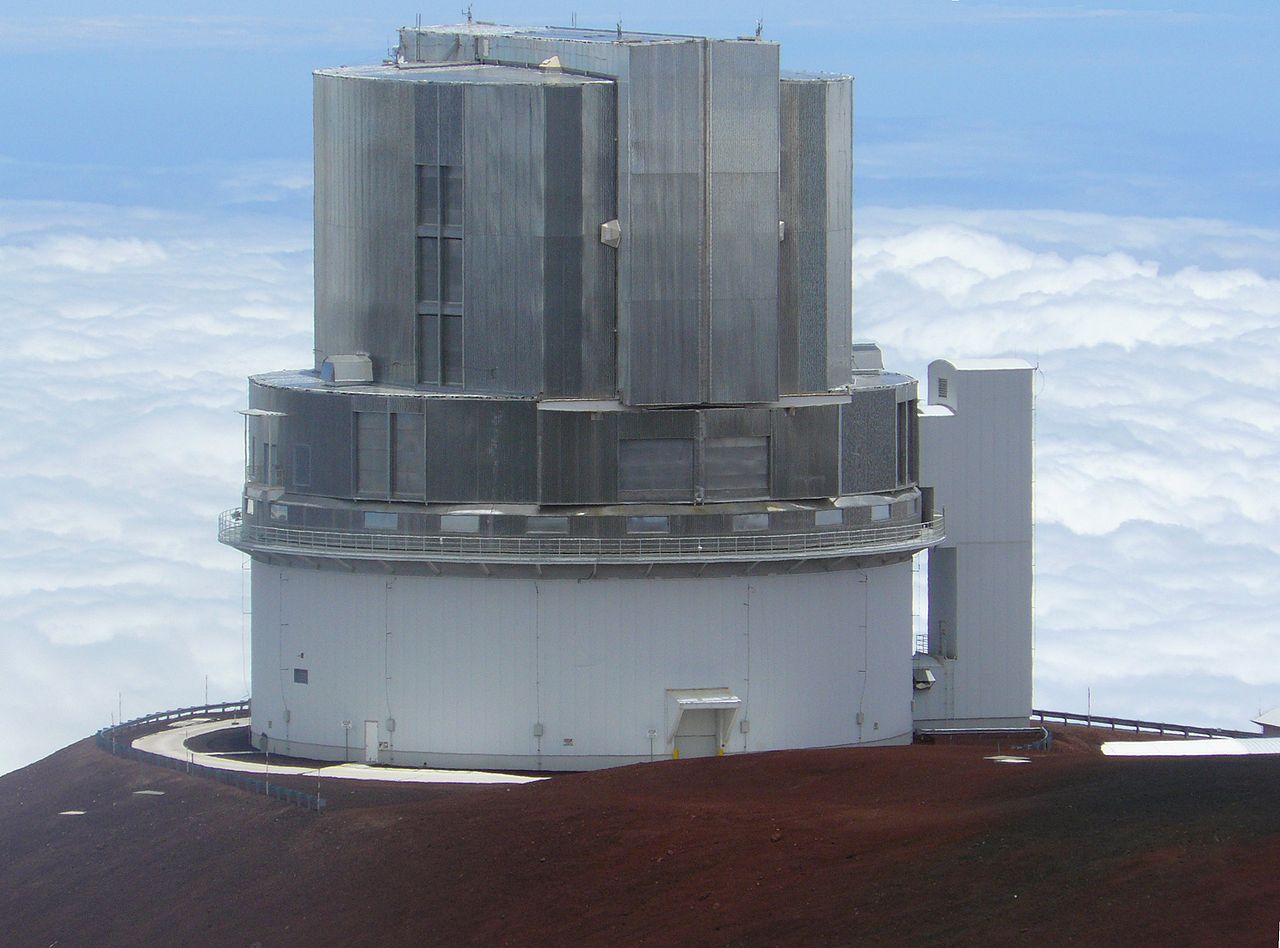Using the powerful Japanese Subaru telescope, the Hyper Suprime-Cam survey (HSC) collaboration team has made and analyzed the deepest wide field map of the three-dimensional distribution of matter in the Universe. Led by Chiaki Hikage (Project Assistant Professor, Kavli IPMU) and a collaboration co-chaired by Surhud More (Associate Professor, IUCAA), a team of scientists primarily from Japan, Taiwan and Princeton University has used the gravitational distortion of images of about 10 million galaxies to make a precise measurement of the lumpiness of matter in the Universe. By combining this measurement with the European Space Agency Planck satellite’s observations of the cosmic microwave background and other cosmological experiments, the team has been able to further learn the properties of the “dark energy” that dominates the energy density of the Universe.
Although dark matter cannot be directly seen, its gravitational effects, predicted by Albert Einstein’s general theory of relativity, cause stretching and squeezing of the light from distant galaxies as they travel across the cosmos, to be detected by the Subaru telescope. They are witness to the growth of cosmic structure (Figure-1, left) and can be used to unlock the mysteries of dark energy. The simplest model for dark energy was introduced by Einstein, termed the “Cosmological Constant”. This model can explain all existing observations, including those of HSC.
The gravitational lensing effect from the distribution of dark matter in the universe is quite weak, but results in small but measurable distortions in the images of the galaxies in the HSC images. Like a pointillist painting (Figure-1, right), the distorted images of millions of galaxies located at a range of distances paint a three-dimensional picture of the distribution of matter in the Universe (Figure-1, right and Movie-1). The HSC research team has precisely characterized the fluctuations or lumpiness of the distribution of dark matter, and the change in that lumpiness over billions of years — from its adolescence to adulthood. This lumpiness is a key parameter that describes how structure in the universe grew from its initial smooth beginnings after the Big Bang to the galaxies, stars and planets we see today.

Figure 1: Left panel: The 3-dimensional dark matter map of the Universe inferred from one of the six HSC observation areas is shown in the background with various shades of blue (brighter areas have more dark matter). The map was inferred from the distortions of shapes of galaxies in the HSC data which are indicated by white sticks. The stick lengths represent the amount of distortion and the angle of the stick corresponds to the direction of the distortion. Right panel: The measurements are enabled by the light from distant galaxies that travels through the Universe and gets deflected by matter at different epochs in the Universe, before reaching the Subaru telescope.
With the high-precision HSC data, the team measured the lumpiness with a precision of 3.6% (Figure-2), which is similar to the precision with which it has been measured by other lensing surveys. These other surveys, including the Dark Energy Survey carried out on the Victor Blanco Telescope in Chile, surveyed brighter and thus nearer-by galaxies than did the HSC; the consistency of results at different distances and thus cosmic epochs gives confidence in the robustness of the results.

Figure 2: The cosmological constraints on the clumpiness of the Universe today (S8) predicted using observations at different times in the Universe. The HSC measurement of the clumpiness of the Universe is shown with the red symbol and are among the farthest measurements using weak gravitational lensing. These should be compared with the Planck results obtained from observations of the cosmic microwave background in the very early Universe and other contemporary weak lensing experiments KiDS and DES.
When compared to the fluctuations expected from those seen in the Universe’s infancy by the Planck satellite, the HSC measurements offer a consistent picture of the cosmological model (Figure-3). The Universe today is dominated by dark matter and dark energy, and that dark energy behaves like Einstein’s cosmological constant (Figure-4).

Figure 3: The cosmological constraints on the fractional contribution of matter to the energy budget of the Universe (rest of it corresponds to dark energy), and the clumpiness of the matter distribution today (S8), as inferred from the analysis of the 3d dark matter map. The results of the clumpiness of the matter distribution from HSC observations of the distant Universe using weak gravitational lensing are consistent with results from other similar observations (Dark Energy Survey and the Kilo Degree Survey) of slightly nearby Universe. The results from the cosmic microwave background observations during the Universe’s infancy obtained by the Planck satellite are shown in blue.

Figure 4: Cosmological constraints on the dark energy equation of state (blue contours alone from HSC), red contours corresponds to constraints after combining with cosmological results from the Planck CMB satellite and other contemporary cosmological measurements using Supernovae and Baryon acoustic oscillations.
However, taken together the results from weak lensing surveys prefer a slightly smaller value of fluctuations than that predicted by the Planck satellite (Figure-5). This could just be a statistical fluctuation due to the limited amount of data available, or might be a signature of the breakdown of the standard model of the Universe, based on General Relativity and the cosmological constant.

Figure 5: The weak lensing surveys such as HSC prefer a slightly less clumpy Universe than that predicted by Planck. The pictures show the slight but noticeable difference as expected from large computer simulations. Is this difference a statistical fluctuation? Astronomers all around the world continue to collect more and more data to answer this question.
This is just the beginning, the HSC continues taking more data and will continue mapping roughly 10 times larger area than used in this work. IUCAA is also involved with the Large Synoptic Survey Telescope which will survey a 100 times more galaxies in a 100 times bigger area to reveal the hidden dark matter and use it to learn the secrets of dark energy.
The research paper has now been submitted to the journal Publications of the Astronomical Society of Japan and will undergo rigorous peer review by the scientific community.
Preprint manuscript of this paper
Paper title: Cosmology from cosmic shear power spectra with Subaru Hyper Suprime-Cam first-year data
Authors: Chiaki Hikage(1), Masamune Oguri(2,3,1), Takashi Hamana(4), Surhud More(5,1), Rachel Mandelbaum(6), Masahiro Takada(1) et al.
Author affiliations:
- Kavli Institute for the Physics and Mathematics of the Universe (Kavli IPMU WPI), UT Institutes for Advanced Study, University of Tokyo, Kashiwa 277-8583, Japan
- Research Center for the Early Universe, University of Tokyo, Tokyo 113-0033, Japan
- Department of Physics, University of Tokyo 1130-0033, Japan
- National Astronomical Observatory of Japan, Mitaka, Tokyo 181-8588, Japan
- The Inter-University Center for Astronomy and Astrophysics, Post Bag 4, Ganeshkhind, Pune 411007, India
- McWilliams Center for Cosmology, Department of Physics, Carnegie Mellon University, Pittsburgh, PA 15213, USA
Research contacts:
 |
Chiaki Hikage Project Assistant Professor, Kavli IPMU, The University of Tokyo Tel.: +81-04-7136-6532 E-mail: chiaki.hikage_at_ipmu.jp * please change _at_ to @ |
 |
Surhud More Associate Professor, The Inter University Center for Astronomy and Astrophysics, Tel.: +91-20-25604-120 E-mail: surhud_at_iucaa.in * please change _at_ to @ |
Glossary
Weak lensing:
Dark Energy:
Cosmic Structure:
Blind analysis:
Movie

